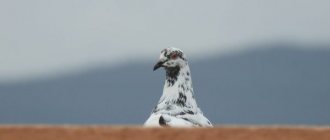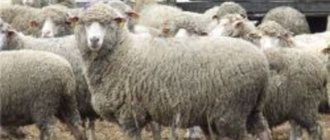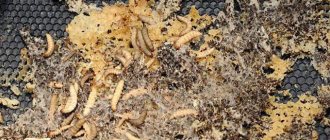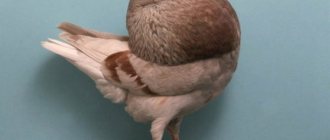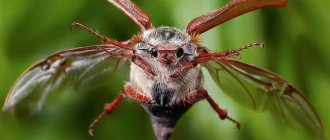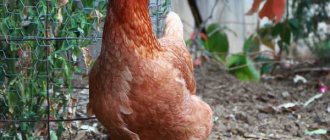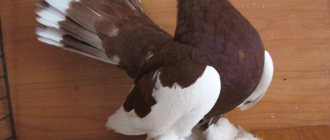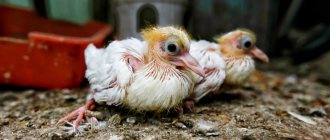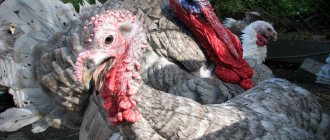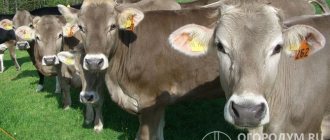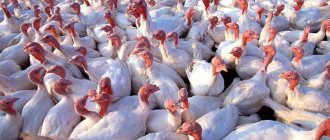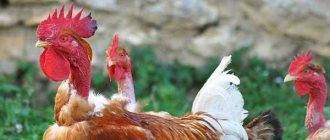The Armavir breed of short-beaked pigeons was bred by Kuban breeders. In the process of work, individuals with a shortened beak were used. They were brought to Armavir from Samarkand, Tashkent, Andijan. The specialists were faced with the task of obtaining a breed of birds with a certain stable exterior and excellent fighting qualities. Currently, birds are in demand among pigeon breeders. They are entered into competitions, where not only the external characteristics of the breed are assessed, but also their flight patterns and wing fighting. What features does the bird have?
Armavir short-billed pigeons
Origin
The first mentions of Armavir pigeons date back to the 18th century. In the south of Russia, birds appeared with immigrants from Asia. The birds were distinguished by feathers on their legs and a short beak. Breeders have become interested in pigeons. Work on breeding birds with unique characteristics continued for a century and a half. The breed received its name from the city where they were breeding the new species.
During World War II, the number of small-billed pigeons declined sharply. The livestock was restored only thanks to the efforts of poultry farmers. Today Armavir breeds are mainly bred in the southern regions of the country.
Features of reproduction
A dove is a bird that chooses a mate for life. Make sure that there is an equal number of males and females in the enclosure or cage to allow full pair formation during the mating season. The short-billed pigeon of Armavir is not able to independently provide full care for hatched chicks. The natural feature of this species (in particular, the short beak) prevents the provision of adequate nutrition to the chicks. You will need the help of poultry farmers or bird feeders of other breeds.
Description, characteristics and varieties
There are 2 types of Armavir pigeons. Breeders bred white-headed and short-billed kosmachi. Each species has its own exterior, but visually they immediately determine whether they belong to the same breed.
The fluffy frame on the legs is a kind of calling card of birds. Other signs:
- Unique flight style.
- Graceful build.
- The surprised look that large, slightly protruding eyes give to birds.
Kosmachi belong to the fighting varieties.
White-headed kosmach
The head of the Kosmachi is small, sometimes decorated with a forelock. The beak is pink in color, does not exceed 25 millimeters in length and is curved down. The eyes are always black and the eyelids are light. Fluffy spurs come in a single color. Different colors, diluted with a white pattern, are acceptable. Pigeons with motley plumage and spur lengths less than 6 centimeters are subject to culling. Poultry farmers consider the long beak, more than 3 white feathers in the tail, and the color of the eyelids not accepted for this variety to be a disadvantage.
See also
Description of Baku breed pigeons, types and names of colors and their contentsRead
Short-billed kosmach
The head of short-billed birds is slightly rounded. In some cases, the forehead is covered by a fluffy forelock. Eyes are black or gray. The eyelids also have light shades. This species also boasts a short, curved beak.
Expert opinion
Zarechny Maxim Valerievich
Agronomist with 12 years of experience. Our best country expert.
Ask a Question
The chest of pigeons is wide, the back tapers towards the tail. The plumage on the legs looks like a fluffy skirt. Black or white color accepted. Other shades are allowed. The edges of the feathers are darker than those at the base.
Disadvantages include eyes of different colors, a narrow head and a not very wide beak. Birds with insufficiently dense feather cover on their spurs are rejected.
Appearance
The characteristic external features are considered to be a massive stocky body, the peculiar proportionality of the body and the growth of pigeons of this species. The bird has a wide back and a slightly elongated body. The long wings fit tightly to the body and end at the level of the tail.
The tail has 12 tail feathers rounded at the ends. Pigeons can have two types of eye colors: black or gray. The most common plumage is gray, burnt, red-yellow, and less often black.
Pros and cons of Armavir pigeons
Advantages and disadvantages
Unique flying style
Unique plumage pattern
Does not require compliance with a large number of conditions during maintenance
Great popularity in the North Caucasus
Developed instinct to care for offspring
Low immunity, need for regular vaccinations
In a confined space they lose their flight qualities
Feeding chicks is difficult due to the short beak
Kosmachi look beautiful in flight. White-feathered wings and shaggy feet give the birds extra flair.
Features of reproduction
The pigeon is a bird that chooses a mate for the rest of its life, so it is very important to keep an equal number of females and males in one enclosure so that normal pair formation occurs during the mating season. The short-beaked variety of Armavir pigeons cannot fully care for the chicks on their own, which is due to a natural feature - a short beak, so they are unable to properly feed the chicks. To avoid possible problems, the eggs of the chicks are placed with other breeds of bird feeder pigeons.
Requirements for maintenance and care
Armavir short-billed pigeons are placed in comfortable conditions. Lack of space has a negative impact on the reproduction of birds and leads to loss of flight abilities.
Poultry house requirements:
- Each Armavir resident is allocated at least 1.5 square meters of room space.
- Set up roosts.
- The walls are whitewashed.
- The floor is insulated with dense flooring.
It is important to regularly ventilate the room. Stagnant air is harmful to birds and promotes the growth of fungal mold.
Disinfection of the internal space every month is part of a set of preventive measures to prevent diseases. The dovecote is cleaned especially thoroughly in the spring. After cleaning, the surfaces are treated with a blowtorch, and then special preparations are sprayed into the room.
See also
Description of pink pigeons and their habitat in nature, protection statusRead
When feeding, follow the regimen and monitor the nutritional balance:
- Each bird requires a 40 gram portion of food every day. In the morning, pigeons are given a quarter of the diet, the rest in the evening.
- If pigeons are fed tap water, the liquid is allowed to sit for 12 hours. During this time, chlorine evaporates.
- Shredded cabbage, spinach or dandelion are used as vitamin supplements. Fresh nettle is also useful.
Feeders are cleaned of residues after each meal.
Conditions of detention
Armavir pigeons belong to an elite breed, so the birds are kept in aviaries and cages, which negatively affects the flying abilities of the birds.
Also, a closed way of life is not conducive to reproduction and proper care of offspring. The breed is gradually dying out. Birds do not require special care or maintenance. It is necessary to monitor the cleanliness of the cage, disinfect the water, provide an appropriate diet, monitor the condition, promptly pay attention to any deviations in behavior, which will help prevent various diseases. According to pigeon breeders, the cage must be high so that the birds have the opportunity to make training flights there.
Diseases and vaccinations
Salmonellosis is considered one of the most dangerous diseases of the Armavir short-beaked breed. Newcastle disease is also detrimental to space travelers. The virus gradually spreads in the body, affecting vital systems, and affects the brain. Harmful bacteria are carried through the air by the wind. The disease immediately affects a large number of individuals. Every year, the disease causes the death of over 2 thousand pigeons.
The only way to keep birds healthy is vaccination. Health problems arise especially often during transition seasons. Temperature fluctuations and sudden changes in weather create favorable conditions for the proliferation of pathogenic microorganisms. Therefore, vaccinations during this period strengthen the immune system.
Compliance with the rules of keeping and a balanced diet, as well as compliance with preventive measures, allows you to raise healthy birds. Armavir short-billed pigeons regularly participate in competitions among birds, where they rightfully occupy leading positions.
Blagodarnensky
Another fighting breed is the Blagodarnensky. They received this name in honor of the village located in the Stavropol Territory, where they were bred. The peculiar plumage of various shades makes these birds very attractive.
Typically Blagodarnensky pigeons are medium in size, with a strong build. The head is small in size, with one or two forelocks. If you look at the photo, you will notice neat feathers on the head - a distinctive feature of these birds, by which they are immediately recognized by lovers of this species.
Birds' eyes have a light iris and a dark pupil. The beak is usually white, medium in size and thick. The short neck is usually thin, but closer to the body it thickens. The elongated body has sloping dimensions. Dense wings converge at the end of the tail and lie on it. The tail of this fighting breed has closed feathers, which are medium in size.
As for the flight, the Blagodarnenskys usually do not have a long duration. Meanwhile, his speed is quite high, with the exit into the “pillar”, after which there are characteristic somersaults and “fight”. How does this bird fly? You can watch the video, the author of the video is Sergey Polezhaev.
Andijan
They are distinguished by their amazing appearance and amazing flight qualities. They cannot be confused with other species, since their characteristic feature is their color and long feathers on their legs. For the first time such a pigeon appeared in Andijan, one of the cities of Uzbekistan. Through selective selection, it began to look exactly as all poultry farmers now know it.
Externally, Andijan pigeons are distinguished by their medium size and dense body. There is a neat forelock on the small head. Eyes, as a rule, are expressive and have different shades - from white to steel. The neck of a bird of this fighting breed is quite dense and goes into a sloping chest. Long wings are gathered at the tail.
A distinctive feature of the breed is the “braids” on the paws, which resemble flared trousers.
Andijan pigeons are valuable not only for their unusual appearance, but also for their amazing flight qualities. As a rule, they can fly tirelessly for 4 to 8 hours, feeling light and free in the sky. And these individuals can also be winged “postmen”, since they can easily move over long distances.
